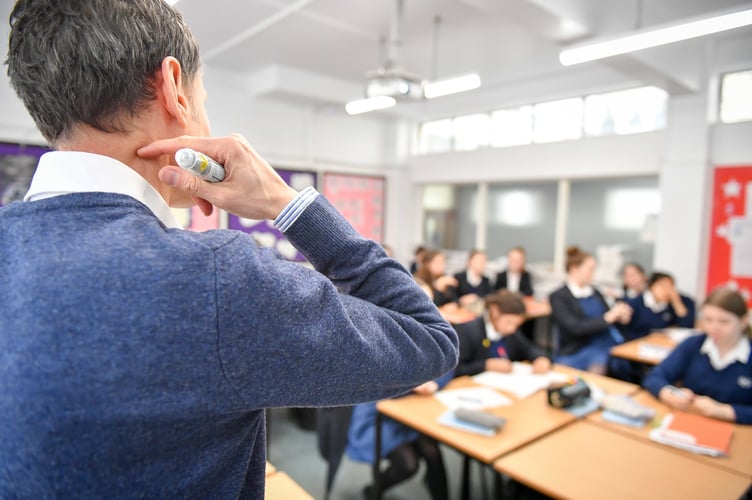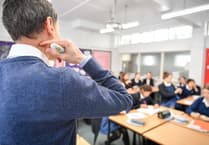The number of full-time teachers employed in North Somerset has reached the highest level since records began, new data shows.
However, it comes as the overall number of teachers working in England fell.
As part of its general election manifesto 12 months ago, Labour pledged it would recruit 6,500 new teachers, to be paid for by ending tax breaks for private schools.
A teaching union called the Government's plans "frustratingly vague", warning recruitment and retention of teachers remains "very tough".
However, the latest Department for Education figures show the number of full-time equivalent teachers employed in North Somerset state-funded schools has increased over the last year.
According to the annual school workforce census, which was conducted in November, there were 1,659 teachers working across 80 North Somerset schools.
This was slightly up from 1,639 a year earlier, and the highest total since records began in 2010.
Across England, the total number of full-time teachers was 468,300, a fall of 400 on the year before, but an increase of 26,900 since 2010 when the national school workforce census began.
Pepe Di’Iasio, general secretary of the Association of School and College Leaders, said: "The pledge to recruit an additional 6,500 teachers is frustratingly vague as it isn’t clear what this figure is in comparison to, how it will be delivered, or whether it will be anywhere near enough."
He added: "Postgraduate recruitment targets are frequently missed – by very wide margins – and we lose a lot of teachers early in their careers."
"We really need a proper strategy from the Government which sets out how many teachers we’ll require over the next five to 10 years and how we’re going to recruit and retain enough people to make that happen."
He warned staffing shortages were particularly severe in further education colleges.
The data shows there were 12 teacher vacancies in North Somerset in November, a rate of 0.7 per 100 teachers in service.
This was slightly higher than the rate of 0.5 a year earlier, and higher than the national rate, also 0.5.
Paul Whiteman, general secretary at school leaders’ union NAHT, said the drop in teacher numbers was driven by "a fall in numbers of new entrants to teaching, newly qualified teachers in England, and by nearly as many teachers leaving the profession as starting out in it."
"Vacancies directly impact children’s education, making it challenging for schools to deliver the full curriculum, with subjects being taught by non-specialists and supply teachers," he added.
He called for a "laser-like focus" on restoring teaching as an "attractive and sustainable professional graduate career".
He also called for the Government to boost real term pay back to 2010 levels, encourage further flexible working options and reduce teachers' "unsustainable workload".
Education Secretary Bridget Phillipson said recruiting and retaining "great teachers in our classrooms" is key to the Government's plans for schools.
She added: "That’s why since becoming Education Secretary, I have reset the relationship with the teaching profession with pay awards of almost 10% over two years, properly valuing teachers for the lifechanging impact they have, and bringing teaching back to the forefront of national life.
"We are delivering on our pledge to recruit an additional 6,500 expert teachers with more joining the profession in our secondary and special schools and over a thousand more people intending to train to become teachers this year compared to last, fundamental to improving children’s life chances."


